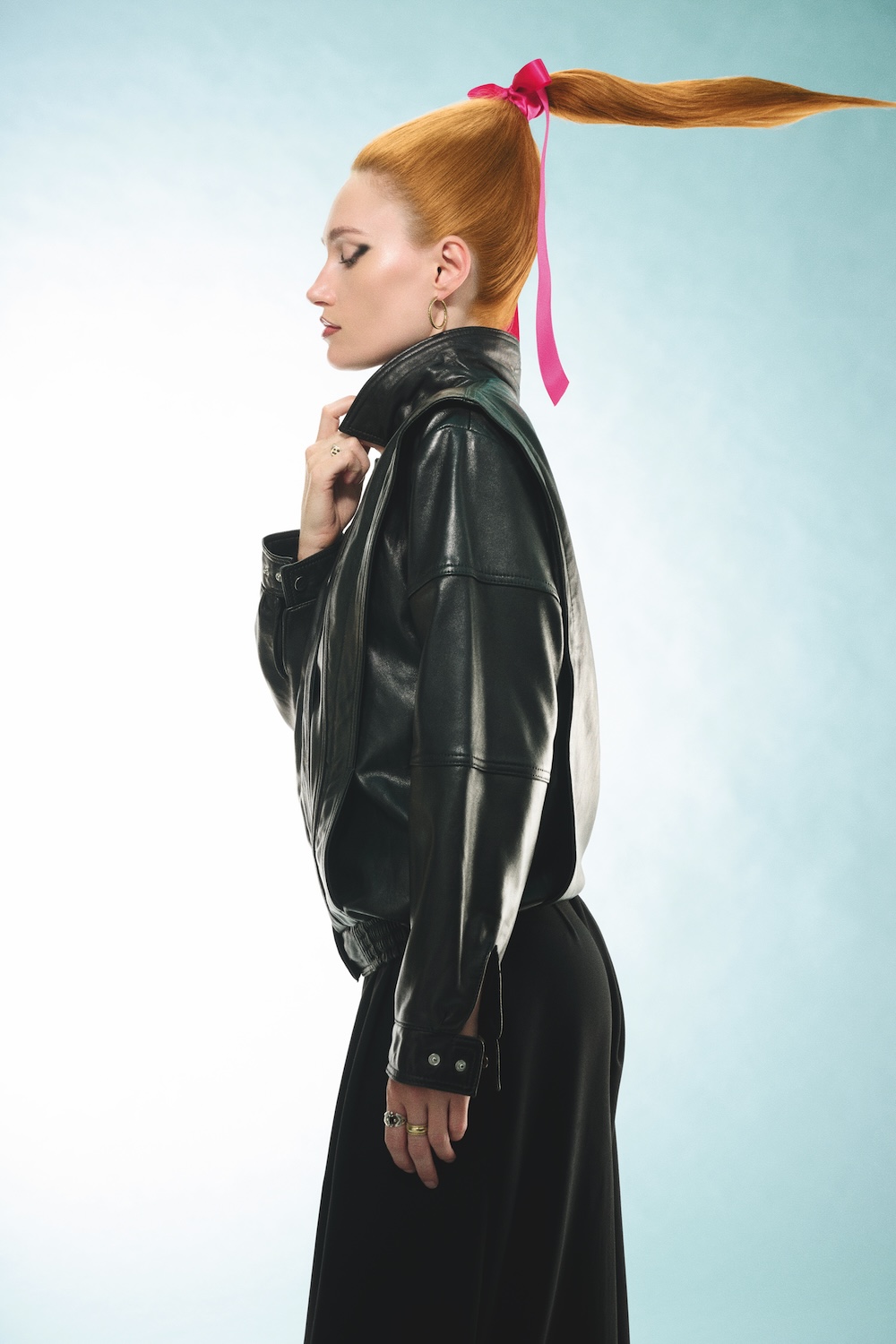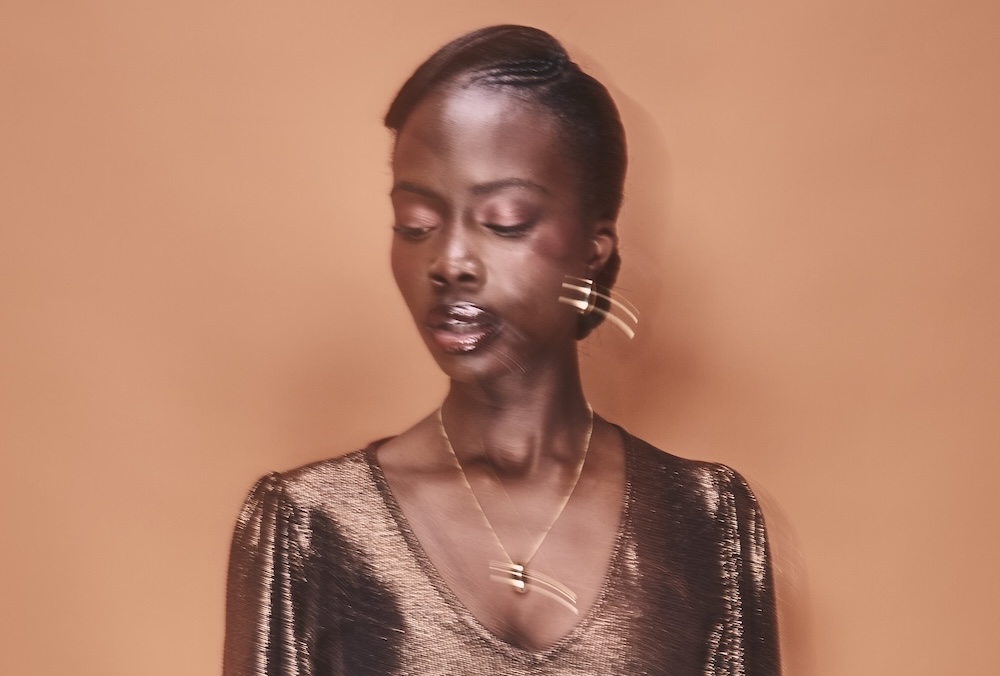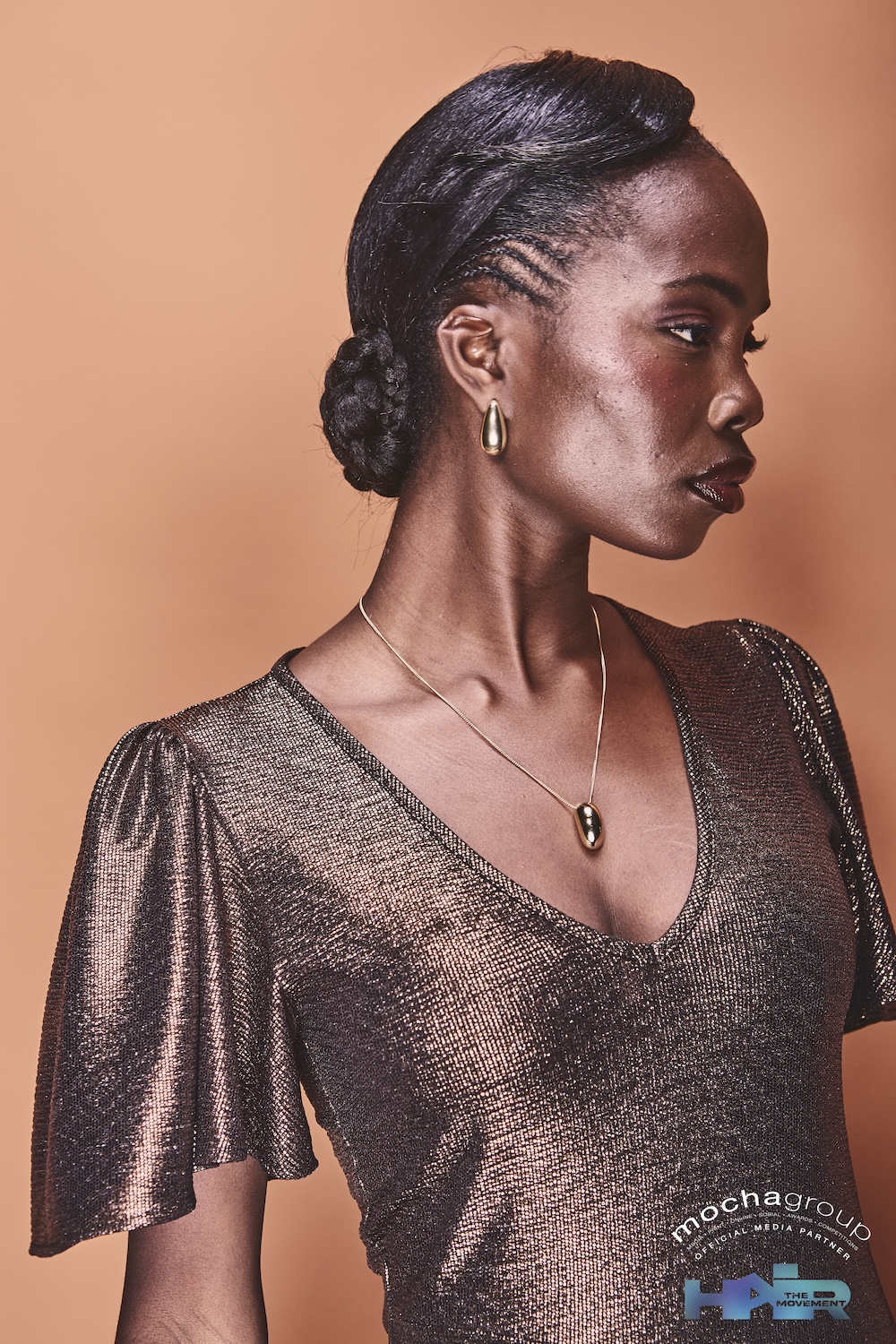Reframing Textured Hair in Education
At the heart of Aminata’s work is a simple but powerful philosophy: HAIR IS HAIR. Despite the cultural myths and anxieties that have long surrounded textured hair, she insists that the fundamentals remain universal.
“Yes, afro and curly hair have unique curl patterns, but structurally, a hair follicle is no different from that of Caucasian or any other hair type. Viewing hair as just hair, rather than treating textured hair as something unique or difficult, would be a huge step forward.”
Aminata begins where others hesitate, with water. Often feared for causing shrinkage in afro and curly textures, she instead embraces it as the foundation of her styling.
“Water is a great base for prepping the hair. It reveals the hair’s integrity and helps me work with it, rather than against it,” she says. Paired with product knowledge and precision, this mindset not only destigmatises textured hair but also empowers other professionals to approach it with confidence.




















































